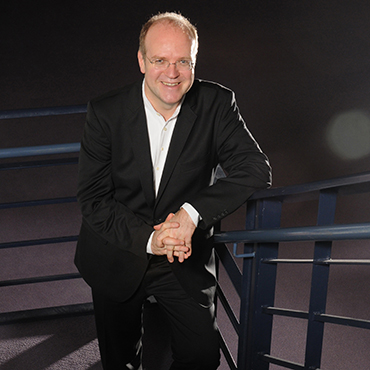BSO and Labadie heat up a cold night with revelatory Mozart

Bernard Labadie conducted the Baltimore Symphony Orchestra Saturday night at the Music Center at Strathmore.
Bernard Labadie’s visits to Washington with his period ensemble Les Violons du Roy are always cherished events. The conductor from Quebec made his debut at the podium of the Baltimore Symphony Orchestra this weekend with a suave and defined all-Mozart program, heard Saturday evening in the Music Center at Strathmore. Labadie directed the performances seated on a piano bench perched on the dais, a habit he has continued since his miraculous recovery from a near-fatal bout with lymphoma a few years ago.
It is good discipline for this larger, more modern-leaning ensemble to work periodically with an early music specialist. Labadie opened with a light, swift Eine kleine Nachtmusik, which recalled the function of this kind of light serenade, often offered as parting music to guests at the end of Viennese parties.
With just around thirty string players, Labadie helped sharpen the sensations of this pleasing music with clean, bouncy articulation and elegant phrasing, often evaporating into nothing as the melody swooped upward. While the beat was rapid, it was not metronomic, with Labadie introducing some pleasing rubato to mark off sections of music. The Menuetto felt especially sly and coy, at a chipper tempo.
The sensation that the performance was more intimate than the large hall usually hosts was heightened in the second piece, the Concerto for Flute, Harp, and Orchestra. With the same small string ensemble, plus two oboes and two horns, Labadie helped the musicians craft an urbane, airy envelope of sound for his two soloists, BSO principal flutist Emily Skala and acting principal harpist Sarah Fuller.
Labadie’s velvet approach brought this delicate but vivid piece to life, so that Skala’s clear and precise tone, paired amicably with the fluttery playing of Fuller’s harp, came through the texture at all times. Unlike in the serenade, Labadie did not push the outer movements too fast, and that ease of tempo allowed the intricacy of the solo parts to unfold gracefully.
The central Andantino is one of the most wondrous slow movements Mozart ever penned, and orchestra and soloists rendered it with consummate refinement. The standard cadenzas by Carl Reinecke, were effective displays of prowess for both soloists. Fuller had a few effortful moments, but she covered these minor faults easily.
The evening closed with a revelatory reading of the “Jupiter” Symphony (No. 41) that came full of surprises. For this work Labadie added another dozen or so strings, beefing up the sound. In the first movement the orchestra leaned to the soft side of the available dynamic palette, so that the structurally important outbursts of sound, with the augmented strings reinforced by explosive brass and timpani, had a growling rumble to them.
The secret to the musical interest of the performance was the care taken with articulations–crisp and emphatic in the opening three strikes, for example, with a slinky sort of rubato on the second phrase in the opening theme. In the Andante cantabile melodies were cleanly delineated so that the piece, luxuriously paced, still felt lush and supple. The third movement pulsated with the feeling of dance, its sinuous chromatic lines smoothed out but still played as if with arched eyebrow.
In the fourth movement, the dividends of Labadie’s approach paid off richly. Even at a fast tempo, the differentiation of attack made all the melodic motifs, combined so ingeniously throughout the movement in polyphonic layers, crystal clear. Each one popped and crackled in the tapestry of sound, percolating so actively that brain and ears were enlivened by the experience. Each detail, including some of the movement’s truly weird chromatic shifts, was optimally measured and distilled. This was a Mozart performance to cherish.
The program will be repeated 3 p.m. Sunday at Meyerhoff Symphony Hall. bsomusic.org; 410-783-8000.
